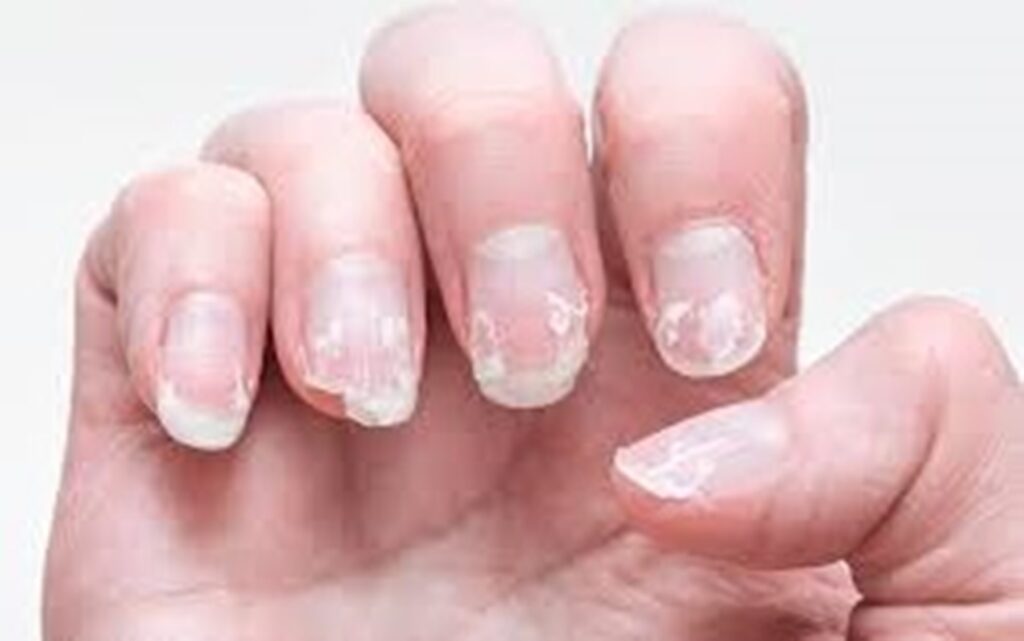- 70855-06939
- drponamrathod025@gmail.com
- Sandeep Vihar Society ,GH 79, Sect 20, Panchkula

Nail Disorders
Nail disorders are conditions that affect the appearance, growth, or function of fingernails and toenails. These disorders can arise due to infections, injuries, systemic diseases, or environmental factors. Healthy nails are typically smooth, consistent in color, and free from cracks or deformities. Any deviation of the nail from this normal appearance can signify a disorder that requires attention.
Types of Nail Disorders
- Infections:
- Fungal Infections (Onychomycosis): These are the most common nail disorders, often causing nails to become thickened, discolored, brittle, or separated from the nail bed. Warm, moist environments promote fungal growth, making this condition prevalent in people who frequently wear tight or damp shoes.
- Paronychia: A bacterial infection of the skin around the nail, paronychia causes redness, swelling, and pain, often resulting from trauma or prolonged exposure to water.
- Trauma-Related Disorders:
- Ingrown Toenails: This occurs when the nail grows into the surrounding skin, causing pain, redness, and swelling. It is commonly seen in the big toes and can result from improper nail trimming or tight footwear.
- Nail Clubbing: Characterized by the enlargement and rounding of nails, clubbing can be a sign of chronic lung diseases, heart disorders, or gastrointestinal conditions.
- Psoriasis and Eczema:
Nail psoriasis causes pitting, thickening, or separation of the nail from the bed (onycholysis). It is associated with skin psoriasis and can severely affect the nail’s appearance. Eczema may cause brittle nails or inflammation of the surrounding skin. - Systemic Conditions:
- Iron Deficiency Anemia: This can lead to spoon-shaped nails (koilonychia), where nails appear concave and thin.
- Thyroid Disorders: Hyperthyroidism or hypothyroidism can result in brittle, splitting nails.
- Congenital or Genetic Disorders:
- Beau’s Lines: These are horizontal grooves across the nail that indicate a temporary cessation of nail growth due to illness, malnutrition, or trauma.
- Yellow Nail Syndrome: This rare condition causes nails to grow slowly, appear yellowish, and detach from the nail bed, often linked with lymphedema or respiratory diseases.
Causes of Nail Disorders
Nail disorders can result from a variety of factors, including:
- Infections (bacterial, fungal, or viral)
- Poor hygiene or excessive exposure to water and chemicals
- Injuries or repetitive trauma to the nails
- Nutritional deficiencies, such as lack of biotin, zinc, or iron
- Chronic illnesses like diabetes, cardiovascular diseases, or autoimmune conditions
Diagnosis and Treatment
A diagnosis often involves physical examination and, in some cases, laboratory tests like fungal cultures or blood tests to identify underlying systemic causes. Treatment varies depending on the condition:
- Topical or oral antifungal medications for fungal infections
- Antibiotics or drainage for bacterial infections
- Moisturizers and corticosteroids for eczema-related disorders
- Surgical interventions for severe cases like ingrown toenails
Prevention
Preventing nail disorders involves good nail hygiene, proper trimming techniques, and protecting nails from trauma or excessive moisture. Wearing breathable footwear, avoiding nail-biting, and maintaining a balanced diet rich in vitamins and minerals can also contribute to healthy nails.
Conclusion
Nail disorders, while often harmless, can indicate broader health issues and affect a person’s quality of life. Recognizing and treating them early is essential to avoid complications and ensure overall well-being.
Menu
